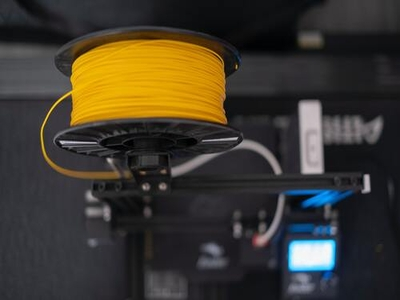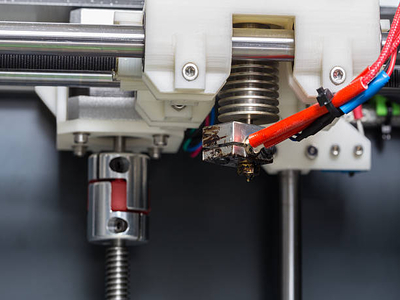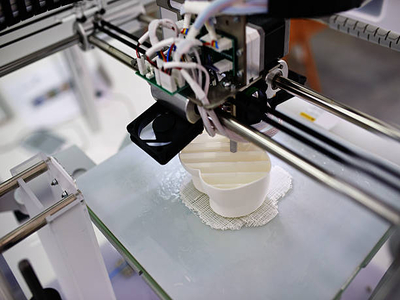Do you have a bunch of scraps laying around from previous 3D prints but aren’t sure what to do with them?
Look no further and definitely don’t throw the scraps away! If you don’t know how to convert scrap 3D prints into filament, we’ll teach you how in this blog post.
We’ll provide step-by-step instructions on how to recycle and convert your scrap prints into usable filament so you can create new ones.
Methods to Reuse 3D Printed Scrap

As the world moves towards a green and sustainable future, reusing materials is becoming more important than ever.
That is why it’s crucial to learn how to convert your scrap prints into filament.
Not only will you save money, but you will also help reduce your carbon footprint.
There are a few different methods you can utilize to convert scrap prints into filament:
- One popular method is to use a filament extruder. This method is relatively simple and does not require any special equipment.
- Another method is to use a filament winder. This method is slightly more complicated but produces higher quality filament.
- Finally, you can also use a regular printer to recycle your scrap prints into filament. This method is the most time-consuming but produces the best results.
Whichever method you choose, converting your scrap prints into filament is a great way to save money and reduce your impact on the environment.
Read our related article, Can You Recycle Failed 3D Prints? We cover more ways to reuse and recycle your failed prints!
Required Items to Begin Converting
If you’re anything like me, you probably have a lot of little pieces of scrap filament lying around, waiting to be transformed into something different.
With a little bit of know-how and a few items, you can take your old, used filament and reuse that 3D print filament to turn it into something new!
Here’s what you’ll need:
- A spool of empty filament (used for winding the new filament onto)
- A drill (to make a hole in the center of the spool)
- A heat gun (to melt the scrap filament)
- Some wire cutters (to cut the scrap into manageable pieces)
How to Convert Scrap 3D Prints into Filament Step-By-Step
Step 1
The first step is gathering all of your scrap prints. Once rounded up, you need to remove rafts or any supports.
Once the supports and rafts are removed – which can easily be done with a pair of pliers or scissors – you should be left with just printed parts.
Step 2

Next, you’ll need to cut the printed parts into small pieces so they are easier to work with.
Once the pieces are cut up, it’s time to start the filament-making process!
Step 3
Once all the scrap has been cut into smaller pieces, place the small pieces of printed plastic into a jar or container that has a tight-fitting lid.
Next, add some acetone to the jar, the amount added depends on how much filament you want to make.
A general rule of thumb is to add about half as much acetone as there is plastic.
EXAMPLE: If you have 1 cup of tiny plastic pieces, you would add about 1/2 cup of acetone.
Step 4
Once the acetone and plastic are in the jar, screw on the lid and shake it well.
The goal here is to get the acetone and plastic to mix.
After shaking a minute or two, set the jar down and let it sit for 24 hours, giving the acetone time to dissolve the plastic.
Step 5
After 24 hours, the plastic should have dissolved into a liquid. Pour out the acetone, and the filament should be left behind.
Congratulations, you have successfully made your filament! Once you dry it, you can use this filament just like any other by loading it into your printer and start printing!
Here’s a guide on how to dry filament if you’re not sure how to go about it.
Want to see this in action? This 3D printer user shredded 100 3DBenchys and extruded new filament:
FAQs
What Are the Benefits of Recycling My Own Filament?
Recycling your filament is significantly cheaper than buying new spools of commercial filament and is a great way to reduce your plastic footprint.
It also allows you to experiment with different materials and colors, giving you creative freedom in your printing projects.
What Are Some of the Challenges of Recycling Filament?

One challenge of recycling filament is having a consistent supply of scraps to work with.
If you only recycle your own failed prints, you might not have enough material to keep your printer running consistently.
Recycled filament can also sometimes be less reliable than commercial filament, so you might have to deal with more failed prints and jams.
Finally, it can be time-consuming to clean and prepare your scrap prints for recycling.
But if you are dedicated to reducing your printing costs and waste, it’s definitely worth the effort!
How Do I Know if My Recycled Filament is Good Quality?
The best way to test the quality of your recycled filament is to print with it and see how it performs.
If you are happy with the results, you can keep using it.
But, if you find that your prints are coming out poorly or jammed more often than usual, it’s probably time to switch back to the commercial filament.
Conclusion
By following the steps above, you can easily recycle and convert your old print 3D scraps and use them to create new filaments for your future projects.
Not only is this an environmentally friendly way to dispose of your unwanted prints, but it can also save you money in the long run.
So, next time you have some leftover prints, don’t throw them away. Instead, recycle them into something useful!
READ MORE